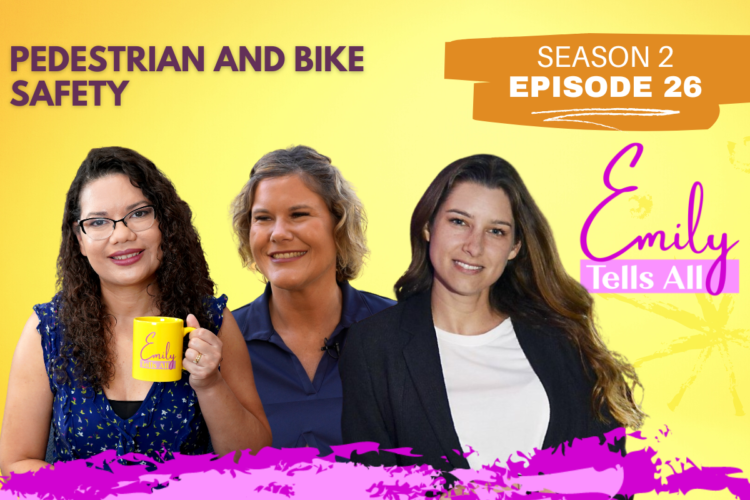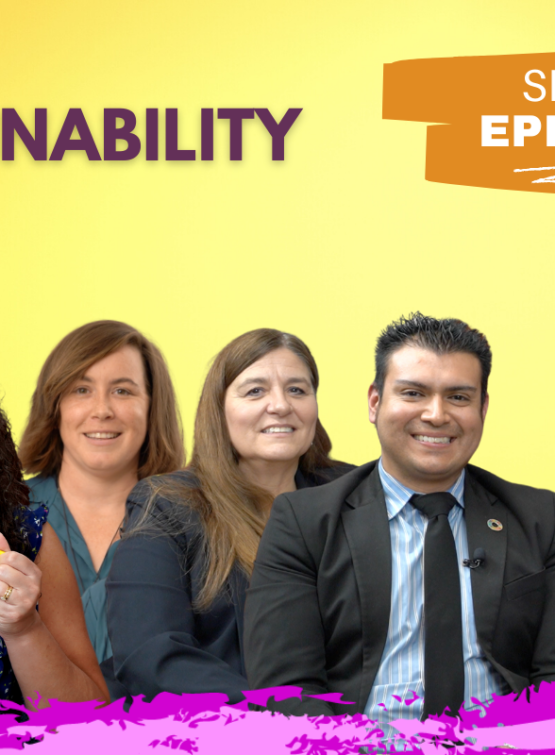AIR DATE JUNE 30, 2022
Title: Pedestrian and Bike Safety
Make sure you know the laws and best practices for staying safe on the road, whether you’re driving, biking, or walking.
Guests and Locations
Bike/Walk Central Florida, Executive Director – Emily Hanna
Florida Department of Transportation, Bicycle & Pedestrian Coordinator – Stephanie Moss
Florida’s Summer Weather Brings an Emphasis on Bicycle Safety
In 2017, Florida led the United States in the number of fatal bicycle accidents. A total of 125 people lost their lives while enjoying an activity they loved.
Since that year, an emphasis on safety awareness comes each summer for cyclists in central Florida and the rest of the state.
Emily Hanna says that a pedestrian-first attitude helps to keep pedestrians and cyclists safe on Florida roads. “We have a driver yield law,” she told me, “which essentially states that in a marked or even unmarked crosswalk, where two roads intersect with each other, a legal crossing exists. They must let the pedestrian go first.”
Although citations and fines provide incentives to respect crosswalks, it isn’t always easy for drivers to recognize unmarked situations. Hanna recommends that anyone on a bicycle evaluate their safety settings before proceeding through an intersection.
“We have to provide safe infrastructure for [pedestrians] to get across the road because they’re going to do it on their own,” she said. “Unless we make it more so that drivers are aware of that, we’re going to continue to have serious injuries.
Always Ride with the Appropriate Safety Equipment
One of the most critical investments cyclists make for themselves is a well-fitted helmet. Stephanie Moss is the Bicycle Pedestrian Coordinator for the Florida Department of Transportation, and she says 150,000 free helmets are given away each year.
“It’s very important when you’re riding a bike to wear a helmet,” Moss told me before a recent ride along the Lake Eola Bike Trail. “The helmet is the single most effective piece of safety equipment for riding a bike.”
Since heads don’t bounce after a fall or an accident, a properly fitted helmet is considered essential gear for a day of pedaling. The first step is to get the correct measurement for the product by having a measuring tape sit about a half inch above your eyebrows to obtain the appropriate size.
Some helmets are better for casual rides, while others protect those who cycle for fitness. Try on different styles, adjust the fitting ring or pads, and secure the side straps to ensure they fit snugly without discomfort.
Moss also says that it is essential for riders of all ages to understand the rules of the road. “If you ride in the road, you should always ride with traffic,” she told me. That’s different from the advice that most adults were given as kids, but safety data shows that it is better to go with the flow than against it.
Assume That Every Driver Is Distracted by Something
Hanna and Moss agree that distracted driving is a significant problem in Central Florida. Even when appropriate bike lanes and other infrastructure supports are present, that doesn’t mean someone behind the wheel will respect them.
“It took 50 years, if not more, to build the environment we see today,” said Hanna. “It’s going to take us time to build our way out of that to support cyclists.”
Moss adds that pedestrian hybrid beacons are a step in the right direction. “We put in three on a stretch of the Orange Blossom Trail where 30 people were killed from 2015 to 2019, creating a traffic control device that we hope saves lives.”
More information about bicycle safety is available at www.bikewalkcentralflorida.org.



